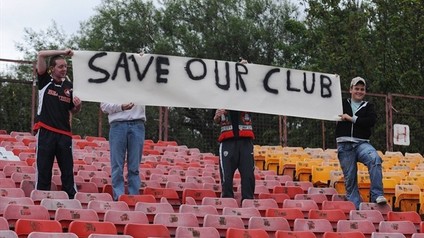
In fact, a recent European Commission report focusing on the professional sport transfer market proves that the above is indeed correct. This has led to a massive gap between the highest tiers across Europe and anything outside the top divisions, making it increasingly harder for other clubs to compete. Sean Kelly MEP spoke on behalf of European Parliament’s committee on Culture and Education which includes sport, saying that ‘’The figures are striking, €3 billion is spent every year on transfers in professional football in Europe, with only approximately 3% of that or €60 million filtering down towards the smaller and amateur clubs for the development of the sport and talent for the future.
The proposal being floated is to have a 'fair play levy' on these exorbitant transfer fees would help smaller clubs and grassroots threefold: compensating them for the costs of training and educating young players, funding development of sport at community and grassroot level, as well as helping clubs to compete on a more level playing field’’.
The above figures show that finances are not filtering down through to the lower levels and grassroots clubs in the game, who often provide the initial starting point and footballing education for the future‘superstars’ of the game who later end up with the big clubs.
This brings in a fundamental question though, if 97% of the transfer fees don’t ‘trickle down’, where does it go? Well, a lot of the top clubs across Europe have to serve many masters such as investors, owner’s profits, operating costs, debts, high wages, dividends, and focus on the stock market. A lot of this money within the top clubs may be repatriated to areas outside with which the clubs themselves actually operate in, which leads to less money within the local economies, less spin offs, lower growth (if any) and lower social benefits to the local communities. Some clubs even have their company's incorporated outside of the locality they represent as a club for tax reasons. Some are incorporated in the Cayman Islands. This reduces taxes and forces money which could have been reinvested or kept within the locality of the club, further increasing the 'value added' aspect to the economic impact the club has in the local region.
This is why fan ownership can offer a fantastic alternative. Less financial risk is likely to be taken, as fans on the clubs board of management are unlikely to personally guarantee financial risk in a club they love. The fans and board often hold many skills from their personal and professional lives which can be of great benefit to their club. This can actually save clubs money in the long run as they don’t have to seek it externally. Fans generally pay a subscription to become a shareholder or member of the club. This generates a nest egg for the club providing security for any unforeseen situations that may lay ahead. That pot of money can also be used to improve the club, reduce debts or for social projects which can help both the club and local community. Fans are unlikely to be focused on dividends, returns, benefits, expenses, and massive profits. This means that the money is generated within the club, is more likely to remain within the club. Any profits are very likely to be reinvested in the club and/or local community. This creates both economic and social benefits to local community.

In recent years in the League of Ireland (Airtricity League), many clubs have faced several financial situations. Some have unfortunately met their demise, whilst others have become supporters owned clubs. Cork City, Sligo Rovers, Shamrock Rovers and Dundalk are just a few who have supporters groups at the heart of the decision making with respect to the running of the club. In times before some clubs had become supporter owned, massive unsustainable losses was surrounding the league as a whole. This sadly led to the demise of some clubs including Sporting Fingal, Monaghan United and Kildare County. Some other clubs had to rejoin the league years later or reform under new ownership, such as Cork City and Derry City. In 2007, the collective losses of the league was €6.9 million. In 2012, the league recorded a collective profit of €241,000. Some of this can be distorted by prize money received by Shamrock Rovers from their very successful 2011 Europa League run, but it remains to be seen if it was included in the 2011 or 2012 accounts. Either way, the problem has stabilised for the league as a whole. Clubs run by fans are being run far more prudently. There have been no massive financial losses recorded either, the most being €40,000. As more clubs have become supporter owned, they have become far more prudent, only spending what they take in, being conservative with estimates. This shows why the problem has reduced and hopefully with more supporter involvement, we can see the league record yearly collective profits on a consistent basis.
As the huge losses that once gripped the League of Ireland have been eroded, this allows money generated by clubs to be spent in other forms, rather than servicing debt. Stadium facilities, training grounds, under age teams and community projects can be considered and invested in by the clubs and supporters, the possibilities are endless, with less debt and supporter ownership, fans have the power to make real, sustainable and positive change for their clubs. The feeling that a supporter can have even the smallest say in the running and direction of a club is hugely encouraging, rewarding and also keeps them a supporter for life, leading to a sustainable market and model. The days of relying on outside investment based on unsustainable spending and lack of sound structures within clubs appear to be gone. Clubs have focused on prudent financial planning and developing structures, links with the community and underage teams, leading to more youths getting senior experience, has resulted in a more financially sound league with more supporter involvement in the decision making process at many of those clubs. This appears to be the way forward and for now, for the first time in a very long while, clubs and supporters are rowing in the right direction together, leading to healthier clubs and a healthier league. The supporter ownership model is leading the way.
This article is based on one that originally appeared in the European Commission supported ‘Heart of the Game’ document, which was created by the FORAS Trust.
 RSS Feed
RSS Feed